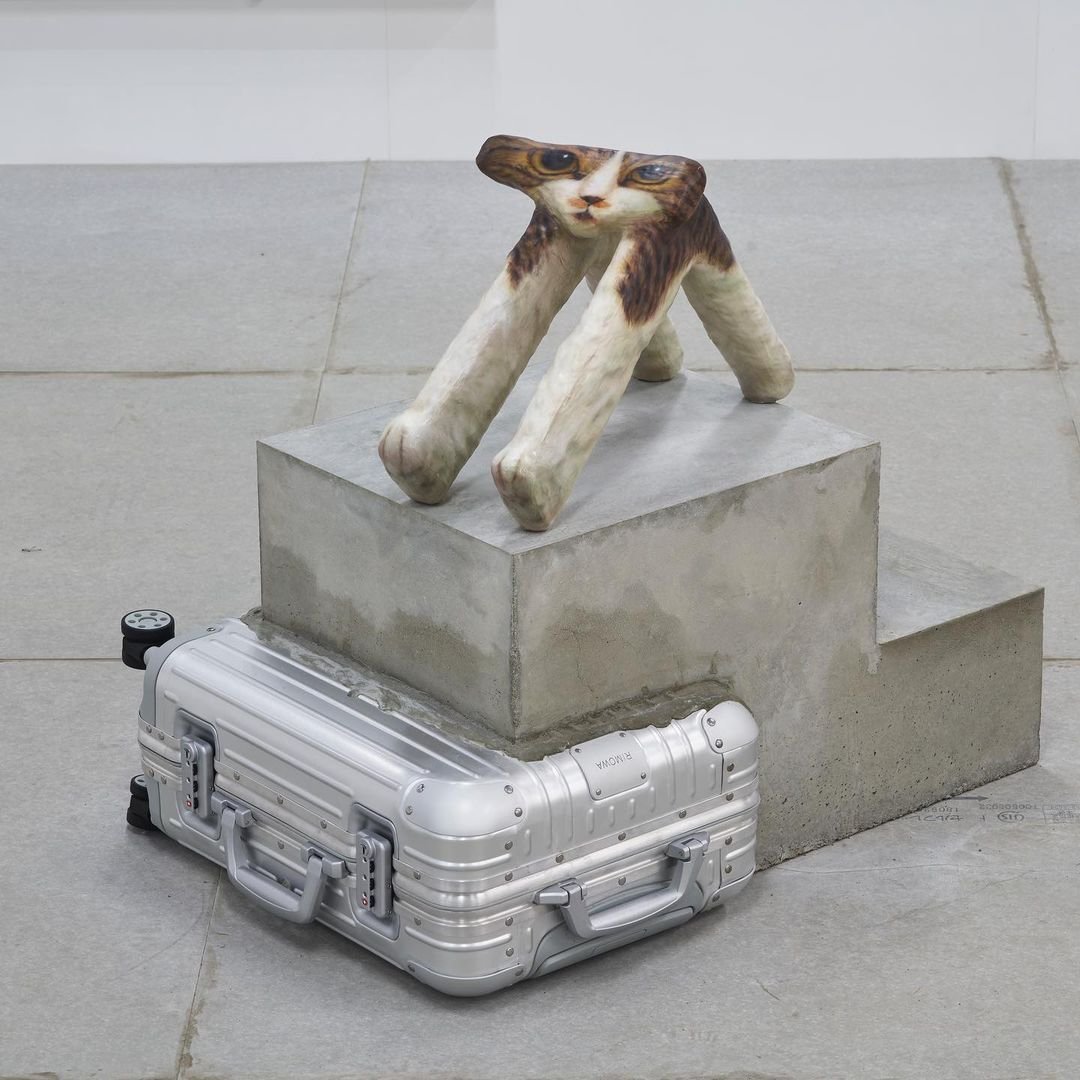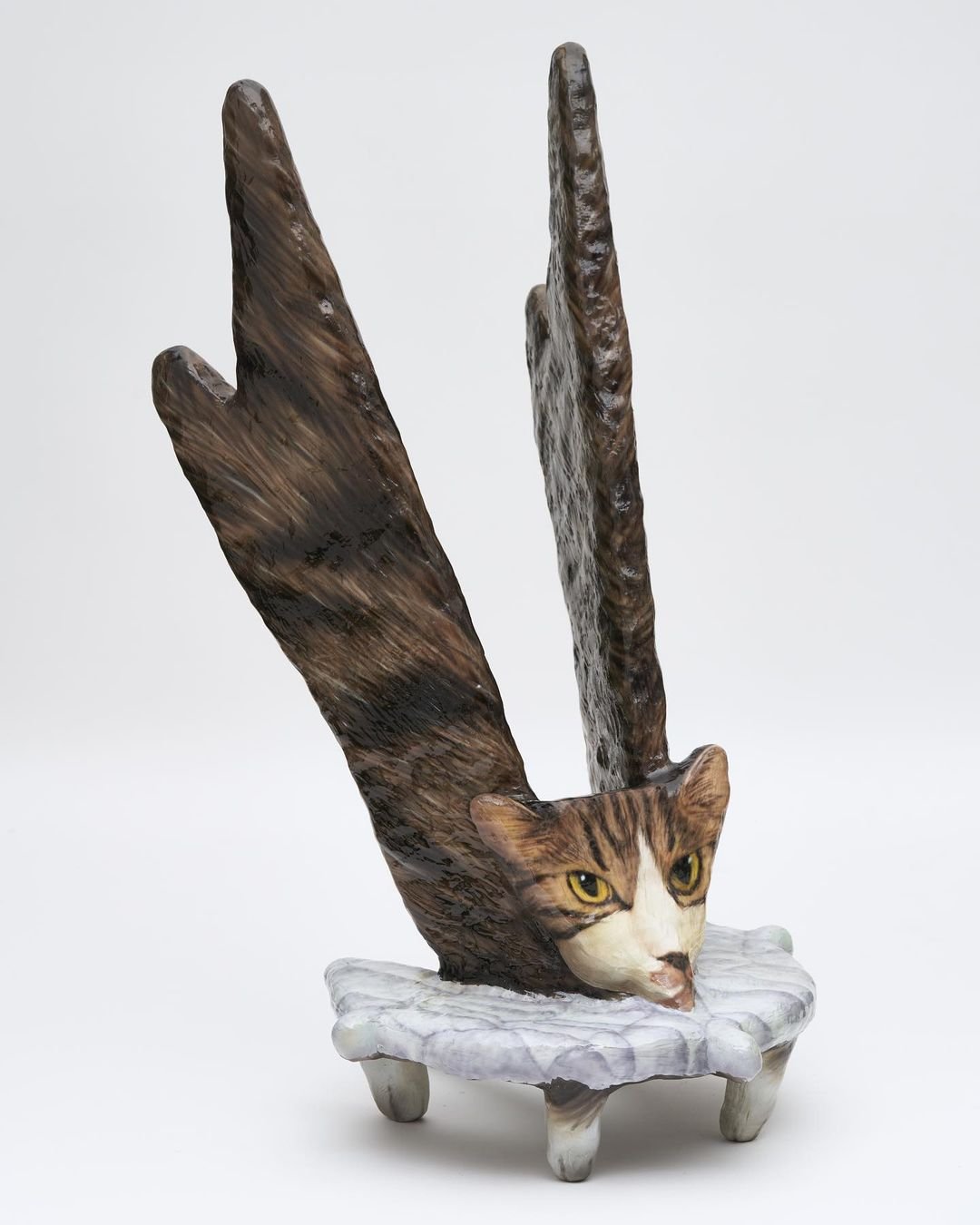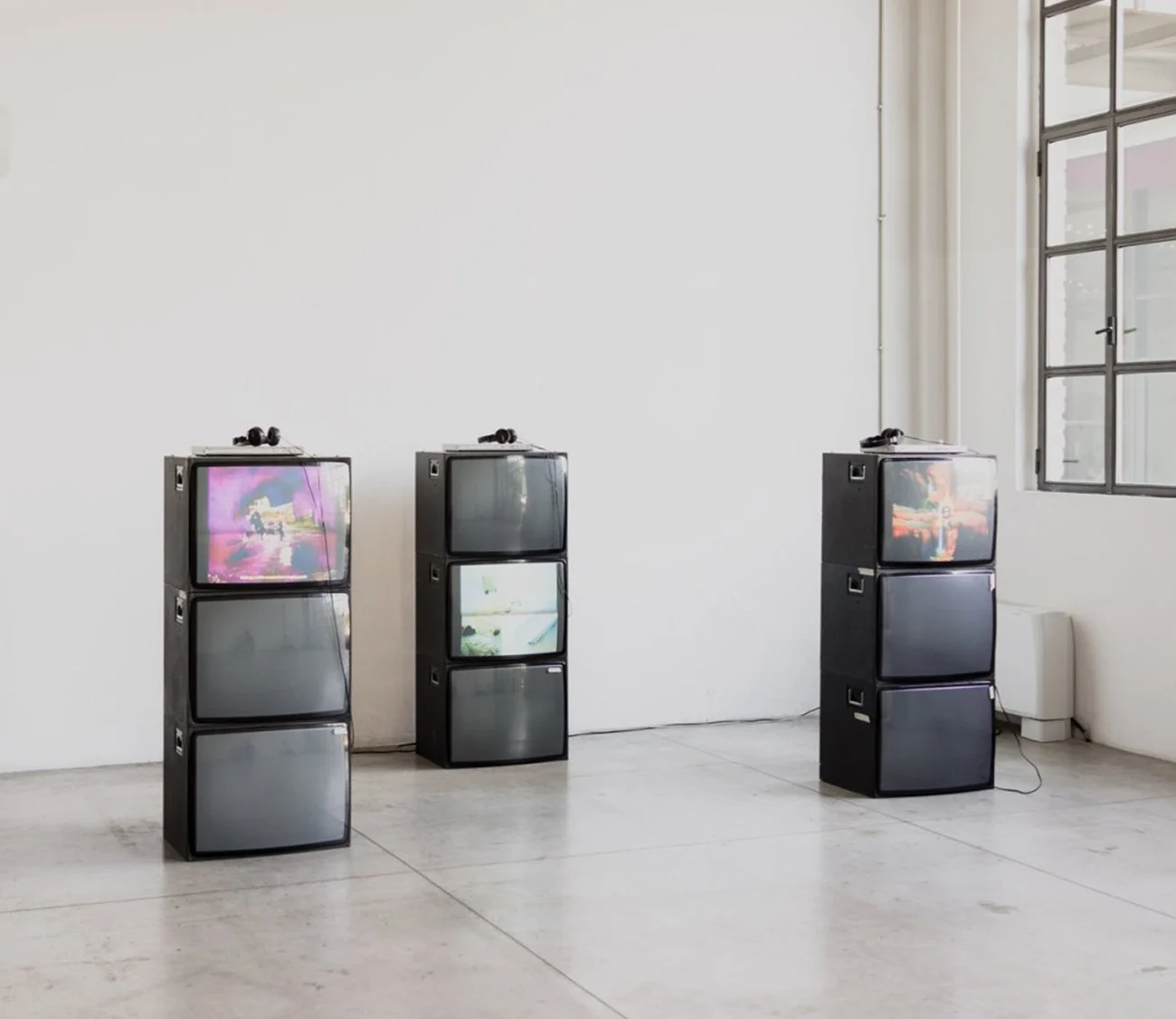Ppuri
Born in Korea, Ahn Tae-Won, better known as Ppuri, uses his work to express the anxiety, fatigue and incoherence that characterises the internet age. His solo show ‘Liminal Room’ at Plan X borrows from the experience of the uncanny that arises from living between a digital and physical state.
When did you start making art? What was your first memory of painting and what did you draw?
I’ve always liked drawing since I was little. I don’t have many memories before Pre-school, but the only memories I still remember are the ones about art. Strangely, I remember precisely what mediums I used and what I drew. The very first drawing I did was a Tyrannosaurus using oil pastels.
What inspired you to practice art? What are your current inspirations and influences?
Until recently, my cat Hiro and digital memes were my inspiration. Now, I’m trying to derive artistic inspiration from more aspects of my daily life. When I was recklessly collecting meme references for work, they became a source of visual fatigue, rather than one of enjoyment. Caught up in the rapid generation and consumption patterns of digital images, I felt a shift in my interior life, like the inner device that measures the soul of the image didn’t function properly. So now I am sceptical about the light-hearted attitude I took towards the image and I’m starting to focus on different aspects of reality. Nevertheless, I’m trying to blend the sense of reality with a digital sensitivity that can’t be completely ruled out of my life.
Your solo exhibition “Liminal Room” is currently on at Plan X. What is the concept behind the exhibition?
‘Liminal Room’ is derived from the concept of ‘liminal space’, which means ‘a place on the border’ that feels uneasy even though it is a familiar place. It’s the sense of alienation and awkwardness that you feel when no one can be found in a familiar space. By twisting the familiar image from real life – my cat – and creating a sense of incompatibility and placing it in an exhibition space called ‘Plan X’, we tried to bring liminal space into reality.
You depict your cat as a lot in your work, how did she become you muse?
One day my friend rescued a lost kitten and I happened to take care of it. That was when I was using famous cat memes in my works. Coincidentally, I read a news article about the cat from the ‘crying cat’ meme and started dreaming about my cat becoming a famous meme star. Since then, instead of using cat memes, I’m turning art my cat into memes.
We see the cat in all different close-ups and distortions, why are you interested in this form of abstraction?
I focus on images that deviate from the rules and calculations of the digital world. Due to technological improvement, digital media has a great influence on reality, but there is still definitely a property of analogue that I wanted to protect. Therefore, I tend to illuminate digital loopholes by reproducing continuously erratic digital images into real life. In that sense, when I was collecting cat memes, one thing that was found common among them was that they capture the flexibility and inappropriateness of cats. It occurred to me that these features – the liquid-like body and not knowing the next step of a cat – seemed to combine well with the key characteristic of a meme – this sense of distortion. In fact, some of the photos of my cat Hiro which were taken with my phone appear like someone intentionally twisted it, even though they are not edited. That’s why I think that the cat is a suitable subject to bring errors of image-editing programs into reality.
What’s does ‘muse’ mean to you?
I have never thought that I would find a ‘muse’ in my art career because I am easily bored focusing on one thing. Before I met Hiro, I looked at lots of different subjects in my art. This is the first time I’ve explored a single subject for such a long time, and it’s made me realise that people change. Moreover, before Hiro, when I was collecting memes, I was tired of the swift pattern of generation and consumption of images. Looking through a lot of digital images everyday, I thought that we lived in an era where it is difficult to concentrate on a single thing in reality. That sentiment and my visual fatigue from all collecting images on my phone led me to focus on this one real cat. The muse, not only to myself but to any artist, is something that fills individual deficiencies.
Your art draw influences from internet and meme culture and there’s something comforting in the irony and humour of these images that represent our new reality and our new digital language. What’s the relationship between humour and art?
Modern society communicates through images due to developments in digital media – we live in an age of simulacrum. People heal as they share funny and harmless images through their social media. Young artists that grew up in line with the development of digital media naturally embodied the culture. I think it is reasonable to see that modern digital humour is used as a source of art and the result draws sympathy among people.
Your work involves applying airbrushed features in a similar way to ‘texture mapping’ to 3D models in digital software. You bring out the physical aspects of digital images – from zooms, to images sculptures in blocks that resemble 3D pixelation. Can you tell me about your interest in the materiality of digital images?
Hiro, my cat, the source of my art, exists in the real world, but when I take a digital image of them, Hiro’s transformed into flat, digital pixels. When I print these images, they are once again replicated into a flat and solid surface in reality, and as forms are repeated, the aura of the original form is lost and becomes a physical myth. However the thick layer of medium and texture mapping provides Hiro with another body, a possibilityof a new form and transformed ‘aura’ in the material world.
Your sculptural pieces take the digital further into 3D shape. What’s the experience of moving from a canvas to installation pieces?
Using airbrushing techniques made me feel like a human printer on a flat canvas, but airbrushing on a solid is like mapping an image onto a sculpture. It was interesting to me that when doing so, due to a gap between the 2D image and the 3D sculpture, the image is crumpled into the sculpture to fit, which produces a similar effect to the errors often seen in editing digital images.
What part of meme culture sparks your interest at the moment, and what meme accounts do you follow?
I am currently interested in an online ghost story called ‘The Backrooms’. Liminal space is also a concept that I learned while searching ‘The Backrooms’. The meme accounts I follow are @welcome.jpeg @cat.attacked.
interview CICI PENG
What to read next

















